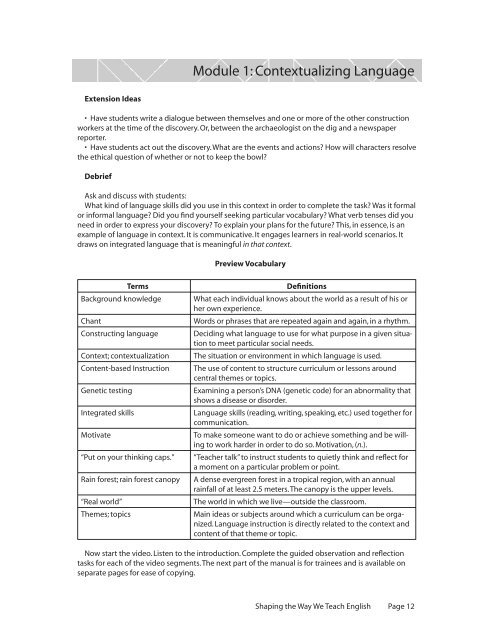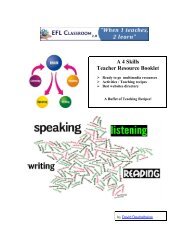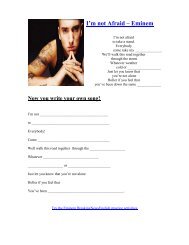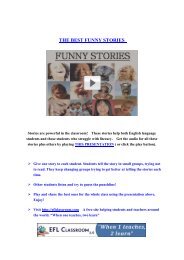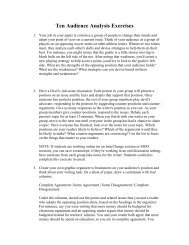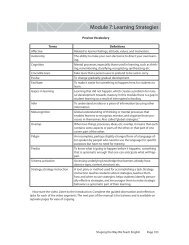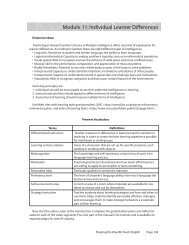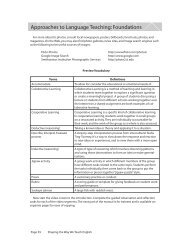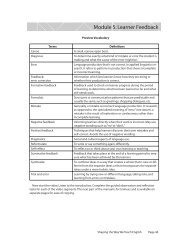Module 1: Contextualizing Language - EFL Classroom 2.0
Module 1: Contextualizing Language - EFL Classroom 2.0
Module 1: Contextualizing Language - EFL Classroom 2.0
Create successful ePaper yourself
Turn your PDF publications into a flip-book with our unique Google optimized e-Paper software.
<strong>Module</strong> 1: <strong>Contextualizing</strong> <strong>Language</strong>Observation GuideType of Activity Topic / Theme <strong>Language</strong>Level / Focus• Song• Prescribedmovements• Warm-up ortransition activity• Body parts• Low-level learners• New vocabularyMaterials Used(No extra materialsneeded)• Rain forest• Animals; monkeys• Dramatization, skit• Presentation• Advanced-levellearners• Oral skills• Reporting onresearch• Vocabulary;defining keyconceptsReflection[Read and answer after viewing.]For each of the four classrooms, also ask yourself the following:1. How were you able to identify the language context (topics, themes, situations)?What did you pay attention to in order to do this?2. How are the activities that you saw related to each of the contexts (the content areas)?3. What kind of language naturally evolved as an extension of the activities and context?4. How might the activities be adapted for different ages? Different topic areas? Levels?Shaping the Way We Teach English Page 14
Approaches to <strong>Language</strong> Teaching: FoundationsNow You Try It—An Action PlanStep 1Think again about your own class(es). What are some themes or topics already in your curriculumthat your students enjoy and are motivated to know more about? Can you identify, or ask your studentsto help identify, some related or new themes or topics?You can read some of the articles on the topic of contextualizing language (see the <strong>Module</strong> 1Reading and the List of Additional Readings and Resources below). Using the video, you have seena few examples and ideas from other teachers’ classes. Now, using the themes and topics you haveidentified from your own curriculum, think of some ways you can accomplish these goals:• Introduce some authentic tasks and activities in your lessons.• Motivate students to get engaged in a role play, a project, a problem-solving task, a puzzle, or animaginary setting.• Review lesson content (stories, characters, vocabulary) in a new way through a game, a song, or aperformance of some kind.Talk about your ideas with your group.Step 2By yourself or with a peer, design a portion (for example, a 15-minute segment )of a lesson thatincludes the use of some of the techniques and activities you listed.Step 3Share your plan with your group. Explain what activities would come before and after your segment.Get ideas and feedback from your group.Step 4Rewrite your design. Try it with your class. Share your results with others, as applicable. If you arenot teaching, ask the trainer or another experienced teacher for feedback. Think about how you willrevisit key content and language concepts in later lessons.Page 15Shaping the Way We Teach English


